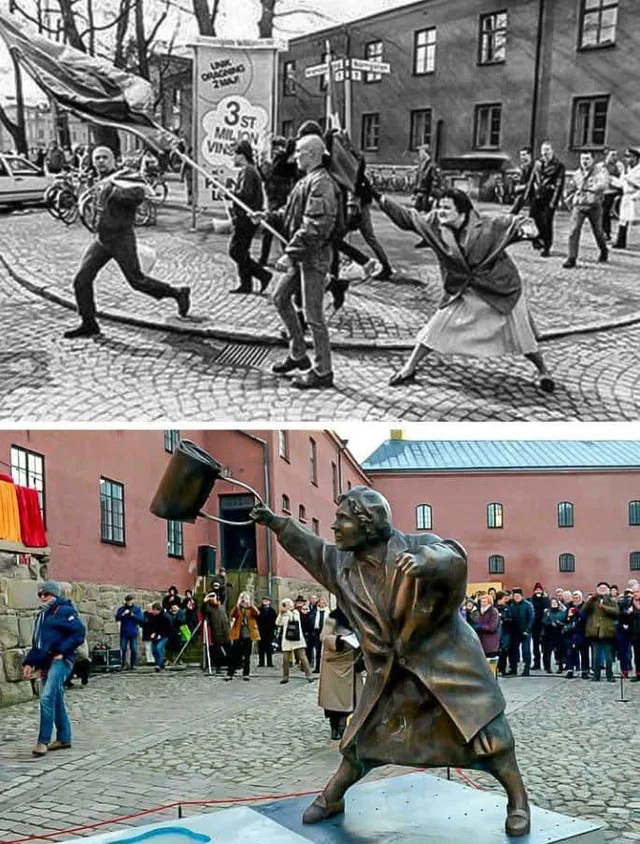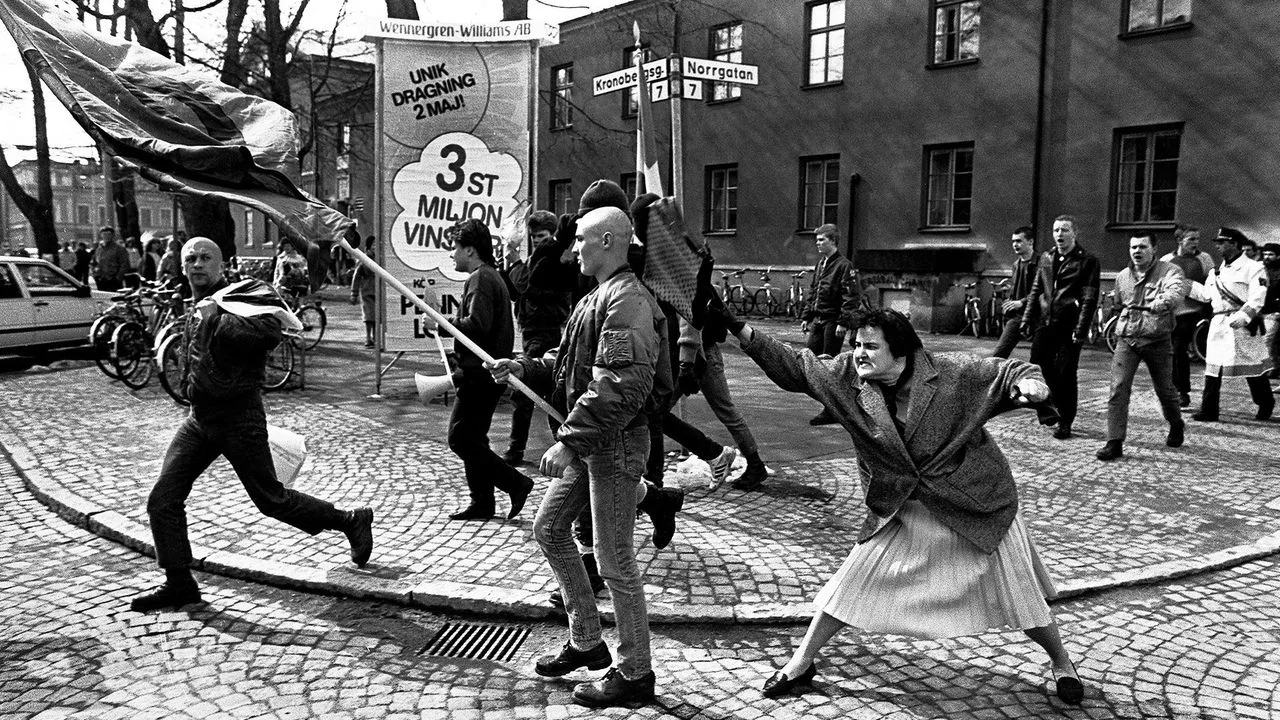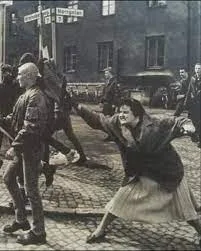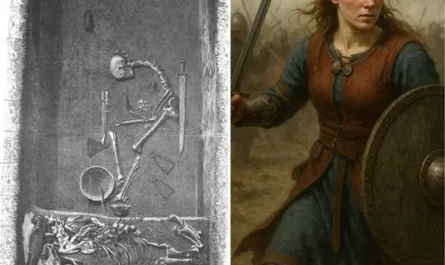In the quiet town of Växjö, Sweden, a statue captures a split-second of raw courage: a woman mid-swing, her handbag arcing toward a neo-Nazi marcher. This is the memorial to Danuta Danielsson (1947–1988), a Polish-Swedish woman who, on April 13, 1985, became an unlikely icon of resistance when she struck a white supremacist with her purse during a far-right rally. The image of her act, photographed by Hans Runesson and published in Dagens Nyheter, went viral in the pre-internet era, earning the Pulitzer-shortlisted title “Woman with a Handbag.” In 2021, a life-size bronze statue by artist Susanna Arwin was unveiled in Växjö’s Storgatan square, immortalizing not Danielsson’s face or form in repose, but the exact moment of her defiance—purse raised, body lunging forward. Unlike traditional hero statues that pose figures in stoic glory, this one freezes a single, spontaneous act, making it a radical departure in public art and a powerful symbol of everyday resistance against hate.

The 1985 Incident: A Purse as a Weapon
On that spring day in Växjö, the Nordic Reich Party—a neo-Nazi group—marched through the streets with swastika flags and racist chants. Among the counter-protesters was Danuta Danielsson, a 38-year-old woman of Polish-Jewish descent whose mother had survived a Nazi concentration camp. Outraged by the display, Danielsson grabbed her handbag and charged, landing a solid blow on a marcher’s head. The photograph captured the instant: her determined expression, the purse in mid-air, the startled Nazi recoiling. The image became an instant symbol of anti-fascist defiance, reprinted worldwide and later inspiring murals and memes.
Danielsson, however, shunned publicity. She refused interviews, saying the attention caused her distress, and tragically taking her own life in 1988. Her act, born of personal history and moral fury, remained a quiet legend until the statue revived her story.

The Statue: Action Over Icon
Unveiled in 2021 by artist Susanna Arwin, the bronze statue stands 2 meters tall on a granite pedestal, purse raised in eternal swing. Unlike statues of leaders on horseback or thinkers in contemplation (e.g., Lincoln Memorial or Rodin’s The Thinker), it portrays Danielsson in motion—a snapshot of courage, not a posed tribute. Arwin’s choice echoes the photograph’s power, emphasizing the act over the person, much like the Jolly Roger’s symbolic intimidation or the caterpillar march’s deceptive unity.
The statue’s location in Växjö, where the incident occurred, adds poignancy. Funded by public donations and the Swedish Arts Council, it faced controversy—some called it glorifying violence—but supporters argue it honors anti-fascism. Vandalized in 2022 with paint, it was restored, symbolizing resilience against hate.

Danielsson’s Background: A Personal Stake
Born in Gdynia, Poland, in 1947, Danielsson moved to Sweden as a child. Her mother’s survival of Auschwitz fueled her hatred of Nazism. In 1985, seeing swastikas in her adopted homeland triggered a visceral response—she later said she “couldn’t stand by.” Her purse, an everyday object, became a weapon of moral force, paralleling the Dahomey Amazons’ use of cultural tools for resistance or the Moors’ architectural defiance.
Cultural Impact and Legacy
The statue has become a pilgrimage site for anti-fascists, with flowers and notes left at its base. It inspired the 2023 documentary The Woman with the Handbag and viral memes comparing it to modern protests. In Sweden, where neo-Nazi activity persists, it stands as a reminder of individual action, akin to the black cat of Emperor Uda’s mystique or the Eltanin Antenna’s mystery—ordinary objects turned extraordinary.

Lessons for Today
Danielsson’s act offers insights:
- Everyday Courage: Her purse swing, like the Frydenbø generator’s innovation, shows ordinary people can resist evil.
- Memory’s Power: The statue, similar to the Kings Theatre’s revival, preserves anti-fascist history.
- Personal Legacy: Her anonymity, akin to Samir and Muhammad’s bond, highlights quiet heroism.
A Swing Through Time
Danuta Danielsson’s 1985 purse swing against a neo-Nazi lives in bronze in Växjö, a dynamic tribute to defiance. Like the precision of Hot Wheels or the mystery of the De Loys ape, it captures a moment that echoes eternally. A woman, a handbag, a stand against hate—her legacy swings on. 👜





